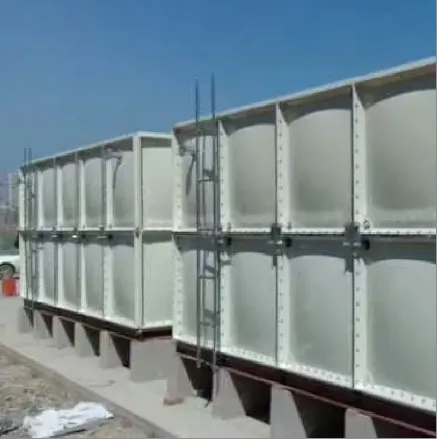loading...
- No. 9, Xingyuan South Street, Dongwaihuan Road, Zaoqiang County, Hengshui, Hebei, China
- admin@zjcomposites.com
- +86 15097380338
- Welcome to visit our website!
Innovative FRP Material Solutions for Water Tank Construction and Design
The Advantages of Using FRP Materials for Water Tanks
In recent years, the demand for efficient and durable water storage solutions has grown significantly across various sectors, including residential, commercial, and industrial. Among the materials available for constructing water tanks, Fiber Reinforced Polymer (FRP) stands out due to its unique properties and versatility. This article explores the advantages of using FRP materials for water tanks, highlighting their performance, longevity, maintenance, and environmental impact.
Understanding FRP Materials
FRP is a composite material made of a polymer matrix reinforced with fibers, which can be glass, carbon, or aramid. The combination of these materials results in a product that boasts high strength-to-weight ratios, excellent corrosion resistance, and durability. These characteristics make FRP an ideal choice for constructing water tanks that need to withstand various environmental and operational stresses.
Strength and Durability
One of the foremost advantages of FRP water tanks is their exceptional strength and durability. The reinforced fibers provide structural integrity that surpasses traditional materials like steel and concrete. While these conventional materials are prone to rust, corrosion, and degradation over time, FRP tanks are resistant to chemicals, UV rays, and environmental factors, making them suitable for storing water in a variety of conditions without significant wear and tear.
Moreover, FRP water tanks can withstand high pressures and are less likely to crack or break under strain, ensuring safe, reliable water storage for various applications.
Lightweight and Easy to Install
Another significant benefit of FRP water tanks is their lightweight nature. Being significantly lighter than steel or concrete tanks simplifies the transportation and installation processes. This characteristic can lead to reduced labor costs and shorter construction times, making FRP tanks a cost-effective solution for many projects. Additionally, the ease of handling FRP materials allows for installations on rooftops or in locations where heavy equipment cannot reach.
frp material water tank

Low Maintenance Costs
FRP materials require minimal maintenance compared to traditional water tank materials. Their resistance to corrosion means that there is less need for regular inspections and repairs, leading to lower maintenance costs over the lifespan of the tank. Additionally, the smooth internal surfaces of FRP tanks help to reduce the buildup of algae and sediment, further decreasing the frequency and cost of cleaning.
Environmental Impact
With growing concerns about the environmental impact of construction materials, FRP offers a more sustainable alternative. Many FRP tanks are made from recyclable materials, and the production process often uses less energy than that of traditional materials. Furthermore, the longevity of FRP tanks means that they do not need to be replaced as frequently, contributing to less waste over time.
Versatility in Applications
FRP water tanks are incredibly versatile and can be customized for various applications, including potable water storage, irrigation systems, and industrial fluid storage. Their resistance to chemical corrosion allows them to handle a range of substances, making them ideal for municipalities, agricultural operations, and manufacturing industries.
Conclusion
The adoption of FRP materials for water tanks presents numerous advantages that make them an appealing option for a wide range of applications. Their strength, durability, lightweight characteristics, low maintenance needs, and minimal environmental impact position them as a superior alternative to conventional materials. As industries continue to evolve and seek sustainable solutions, FRP water tanks are likely to play an increasingly important role in efficient water management practices. Ultimately, investing in FRP tanks contributes to the reliability of water storage systems, benefiting both current and future generations.
-
The Rise of FRP Profiles: Strong, Lightweight, and Built to LastNewsJul.14,2025
-
SMC Panel Tanks: A Modern Water Storage Solution for All EnvironmentsNewsJul.14,2025
-
GRP Grating: A Modern Solution for Safe and Durable Access SystemsNewsJul.14,2025
-
Galvanized Steel Water Tanks: Durable, Reliable, and Ready for UseNewsJul.14,2025
-
FRP Mini Mesh Grating: The Safer, Smarter Flooring SolutionNewsJul.14,2025
-
Exploring FRP Vessels: Durable Solutions for Modern Fluid HandlingNewsJul.14,2025
-
GRP Structures: The Future of Lightweight, High-Performance EngineeringNewsJun.20,2025
